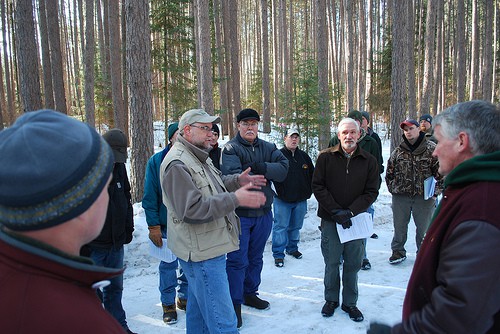
While I agree that federal agencies may have too many advisory committees, and that the structure of FACA committees may involve large amounts of bureaucracy and paperwork, I think they can also serve a useful purpose. So here is my experience: I was the Designated Federal Official for the Forestry Research Advisory Committee for a year or two, and I also worked with the ACAB (Advisory Committee for Agricultural Biotechnology) and tangentially with the NAREEAB , (National Agricultural Research, Extension, Education, and Economics Advisory Board). I observed advisory committees run well and not so well, making recommendations of great, and little, utility. I experienced the frustrating paperwork requirements firsthand as a Designated Federal Official (trying to get the Office of White House Liaison to accept our nominees, and restarting the process when clearance packages got lost). My most recent experience was with the RACNAC (Roadless Area Conservation National Advisory Committee) as a staff person involved with the Colorado Roadless Rule, which entailed all the fun and none of the bureaucracy for me.
Here are a couple of reasons I think a formal collaborative group for the planning rule might be useful.
1) Commitment to the process. The formality of a FACA committee means that people (generally) take their responsibility seriously and put the time in to really work on the issue and understand it. Being a FACA committee is not the only way of getting this commitment (certainly the Colorado Roadless Taskforce had that commitment, but it was not within the federal structure) but formalizing it as opposed to having a generic kind of group seems to help. Perhaps this is because, as a FACA committee, the group can make formal recommendations.
2) Today, “bipartisan” is on the lips of many. Especially for planning rules and roadless rules, there has been a history of public policy as ping- pong ball from administration to administration. A set of recommendations from a collaborative group gives an opportunity for recommendations beyond partisanship. It also potentially gives political cover for the next administration not to mess with it. The bipartisan Colorado Roadless Rule Taskforce recommendations carried forward across governors of different parties. Most of us just want a planning rule that we can live with that will stick. The “will stick” part can be helped by a FACA committee.
3) Navigating the clearance process. Many agencies weigh in, some with strange and peculiar worldviews, and if you want your rule cleared, you have to go along or the Department has to spend political capital. If the recommendations left the FACA committee and the Department went along with them, it would be pretty transparent where the changes came in. Then advisory committee members could potentially set up educational meetings with the recalcitrant agencies, or call upon their own favor networks to facilitate progress.
4) Raising the level of dialogue. Some individuals will come to a public meeting and comments about how bad a certain idea is (along the lines of “my views are clearly based on goodness and light and yours are venal and unprincipled”). I have seen the RACNAC ask useful questions like “how would you change the proposal to improve it?” that served to focus the dialogue. In one case, a person had flown in to a public meeting who clearly didn’t know the topic and hadn’t been briefed and didn’t seem to have a clue about how to improve the proposal or on anything that would veer off the written statement. The agency itself would probably have simply felt uncomfortable asking for higher level input, as our role is not generally to question or improve public comments but be hospitable to the public and listen. Having expectations for, and hopefully, generating, substantive discourse would add greatly to an involvement process.
5) Providing media cover. Members of a FACA committee can say all the things about their recommendations in colorful ways that agencies probably can’t.. and defend their recommendations in the media. This keeps the agency from becoming either a punching bag, or perceived to be defensive and argumentative.
In summary, then, a FACA committee, in my experience, can provide all kinds of useful support and cover for a complex, divisive issue and is worthy of consideration. The only addition I would have would be to include some kind of peer-to-peer discussion with agency staff or a formal devil’s advocate, as to the practicality and economic cost of the recommendations.
Some would argue that this should be a committee of scientists, but I think the STS literature and particularly Mark Brown’s book “Science in Democracy” leads us to the conclusion that representational would be best (as was the RACNAC).
P. S. I think that Brown’s book is great, but is a bit heavy on the canon of political theorists for most casual reading. I haven’t thought about Locke, Hobbes and Rousseau since I worked on the 1995 RPA, where we tried to place them along Pinchot, Leopold and Muir to describe the “serving people” part of “caring for the land and serving people.”







